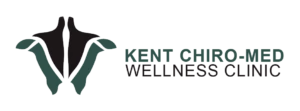It’s a fact of life that as we age, we begin to lose our bone density. Osteoporosis is a process where the bones start to become – not only thin – but also fragile. Osteoporosis is a very common cause for hip or vertebral fractures in senior population. Osteopenia is a classification for bone density that is a precursor to osteoporosis. Someone with osteopenia has a lower bone density than the normal ideal density, but it is not low enough for an osteoporosis diagnosis. To be diagnosed with osteopenia, you will have a bone mineral density T-score between -1.0 and -2.5. Women are at higher risk than men at developing poor bone density. The risk is even higher if there is a genetic predisposition to develop osteoporosis in the family. Other factors such as lowered sex hormones, long-term corticosteroid drugs, smoking, extended immobilization of the body, infection, alcohol abuse, thyroid problems, adrenal gland abnormality, scuba diving, nutritional deficiencies, chemotherapy and radiation can also lower your bone density.
While you can never regain the bone density you had in your youth, you can help prevent rapidly thinning bones, even after your diagnosis. Here’s a breakdown of five lifestyle steps to help you on the road to better bone health.
1) Get your vitamin D and calcium levels checked at your physician. Ensure you are taking enough from food and supplements.
Any patient being treated for osteoporosis should have both calcium and vitamin D levels checked in blood tests. Most people get less than 500 milligrams of calcium in their daily diet. Sun exposure helps produce vitamin D, but as we get older, our skin is not as efficient at making vitamin D. Also, if we’re careful to use sunscreen, we’re at risk of having low vitamin D level. Living through long Canadian winters is not easy either and definitely does not help in absorbing appropriate quantities of vitamin D. If you have osteopenia, it’s generally wise to go see your physician to get the right calcium and vitamin D doses and the right types for your bones. If you have no issues with bone density and you are looking to preserve good bone health, talk to your chiropractor or physiotherapist about what’s the best calcium and vitamin D supplement you can take. Examples of food rich in calcium are low-fat milk or soy milk, cottage cheese, low-fat yogurt, salmon, calcium-fortified orange juice, cooked spinach, turnip greens, collard greens, and cooked broccoli. Make sure you start adding them to your diet.
2) Exercise. Exercise. and Exercise!
Calcium supplements and osteoporosis medications can stop bone loss, allowing the bones to rebuild themselves. But the body needs some sort of “encouragement” to rebuild them. The skeleton needs to be under stress so it will get stronger. That’s why exercise is important for better bone health. Weight bearing exercises (against gravity) such as walking, jogging, light aerobics, and biking against resistance are great. Abdominal exercises, lower back exercises, yoga, Pilates, and tai chi can help strengthen the spine. Swimming on the other hand doesn’t help in building bones. It helps however in relieving arthritic pain. Before you get too excited incorporating exercises to your lifestyle, make you that you always consult with a medical professional before starting.
3) You may want to start reducing alcohol intake and eliminating cigarettes.
Alcohol in excess causes about 2% bone loss in a year’s time. Nicotine also causes 2% bone loss. If you’re having alcohol and nicotine both in excess, the combined bone loss is actually doubled – 8% bone loss! Alcohol in moderation – 1 or 2 reasonable drinks a week – is harmless. Keep in mind that alcohol and nicotine can interfere with lots of supplements and medications. Once again, always consult with your doctor.
4) Consider chiropractic and physiotherapy
Changing your lifestyle requires some guidance. Chiropractors and physiotherapists can help you regain mobility, flexibility, and reduce overall tension, so that your exercise can be enjoyable and pain-free. Patients who visit chiropractors and physiotherapists often report that they can run better, sleep better, and perform more workout challenges at the gym with ease and less discomfort. When exercises are pleasant, you can rest assured that your bone density is being well taken care of.
5) Consult with your medical doctor about getting a Bone Density Testing
A bone mineral density test (BMD) is the only way to determine the extent of your bone loss. The gold-standard bone density test is dual energy X-ray absorptiometry (DEXA). At Kent Chiro-Med Wellness Clinic, chiropractors will frequently recommend that certain high-risk patients perform this test to ensure that their spine and other bone structures can withstand chiropractic adjustments and/or mobilization. This is important if your chiropractor noticed that you have high risk factors for poor bone density during your medical interview.
A word of advice for parents: the sooner you teach your kids about how to preserve bone density through proper diet, supplements and exercises, the better their bone density will be when they reach late adulthood. Talk to them about it today
